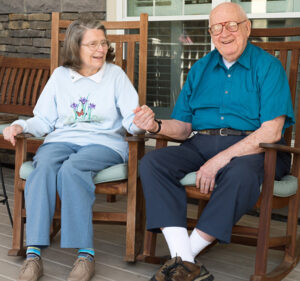
Last week, we received a call from a client who we wished had gone onto wait lists. This was someone whose father had reached the point where he could no longer live on his own:
“We are finally ready to move dad to a memory care community. As you may recall, he is adamant about being on the first floor.”
As I had to explain to our client, it may not be that simple. Many senior care communities have been filling up in recent months and now have wait lists.
What Changed?
Senior care communities are in high demand; the best of these have often had wait lists. But COVID has exacerbated the situation. Over and over, people tell us, “My mom seems so much worse than she was a year ago.”The isolation of the pandemic accelerated both the cognitive and physical decline of many older adults, who were less active and engaged over the past 18 months.
And so there has been a huge ramp up in demand. Adult children have seen the impact that living alone has had on their parents; they want to take advantage of everything a community has to offer: high-quality prepared meals, 24/7 care, planned activities, and other people to meet and spend time with (even if socially distanced).
The result is limited availability. With that in mind, here are a few suggestions for successfully finding and moving your loved ones into the community of their choice when they are ready.
#1. Identify where you want to go.
Doing research doesn’t mean you are committing to something today. What it means is that you will be ahead of the game if and when the time does come for a move.
If you find a community that you like, you can put down a deposit (which in many cases is fully refundable), and get your name added to the wait list for your desired apartment style. If something you are looking for comes available, you’ll have the right of first refusal.
The community may encourage you to move right away and may even offer additional pricing incentives to do so. But turning down an available apartment doesn’t put you at the back of the line. You’ll stay at the top of the list and they will contact you again when something else appropriate opens up later on.
#2. Get in first. You can always move internally.
When our dad agreed to move to an assisted living last year, he said he would only go into a two-bedroom apartment. But the community he wanted has just four of these in the entire building, and there were already three non-resident people on the wait list ahead of him.
We convinced him that the best way to get a two-bedroom apartment within the next few years would be to become a resident first. So, he reluctantly agreed to move into a one-bedroom apartment instead. When a two-bedroom became available a few months later, and because he was already a resident in that community, he was given priority over those on the outside waitlist. (Interestingly, once he moved in, he loved his one-bedroom apartment so much that he decided not to take the larger unit after all!)
All wait lists are not the same. Current residents will usually have priority. If you’ve found a community you want, discuss moving into what is currently available with the expectation that you can change apartments later (most communities will even help with the relocation from one apartment to another).
#3. Get started even earlier if you are considering subsidized housing.
Subsidized housing is designated for seniors living on a moderate, fixed income. Typically, residents are required to pay 30% of their income in rent, leaving them additional funds for food, transportation, some in-home support, etc. For those who don’t qualify for skilled nursing care on Medicaid and who can’t afford private pay assisted living, subsidized senior housing is often the only option.
Here, the waiting period is especially long, often two or three years in most towns. Once again, the best strategy is to start your research early, so you will have a place to go when the time comes. Additionally, we recommend getting on the wait list for subsidized senior housing in all of the towns surrounding wherever it is you want to be.
Summary
We have been working with older adults and their families for a long time. We know this process can be time-consuming and sometimes frustrating.
But, advance planning can make a big difference! Start early to identify potential communities and add your name to a wait list. These simple steps can increase the chances of moving into the community and apartment style of your choice when you are ready.